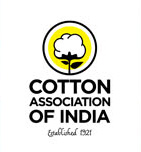By GT staff reporters | Mar 29, 2023
China is phasing in an independent certification and evaluation system for cotton production to "fill the gap" of overseas-led certification like the Better Cotton Initiative (BCI), in a bid to boost the industry and strengthen the discourse power for Chinese cotton makers, industry organization representatives and companies told the Global Times.
Although such projects are still at an early stage and has yet to cover the majority of China's cotton products, it has been warmly welcomed by domestic cotton producers as they deal with industrial challenges such as political suppression from some western countries, they said.
Wang Jianhong, vice chairman and secretary general of the China Cotton Association (CCA), said that the CCA and other industry organizations have launched the Cotton China Sustainable Develop Program (CCDS) in order to create China's own cotton certification system to push the industry toward high-quality and sustainable development.
To date, a total of eight producers, 13 supply chain enterprises and nine brands are participating in CCDS, Wang told the Global Times, adding that cotton producers in southern Xinjiang region have been "very active." The CCDS has also launched an industrial standard for sustainable cotton production based on factors which cover environmental protection, occupational health and social responsibility.
The new program has commissioned two companies, one of which being leading global testing and certification company SGS, to complete online and offline review and certification work on 1.2 million mu (80,000 hectares) of cotton fields, and 170,000 tons of cotton were identified as “sustainable under the standard”. That accounts for about 2 percent of China's total cotton fields, Wang disclosed.
On Tuesday, a total of six Chinese cotton manufacturers were awarded with the first issuance of sustainable cotton production certificates by the CCDS during a clothing expo in Shanghai.The six companies include China National Cotton Group Xinjiang Cotton Limited Company, Xinjiang Lihua Group, Hubei Yinfeng Cotton, Xinjiang Guoxin Seed Industry Co, Xinjiang Guotai Cotton Industry Co and Xinjiang Jiashenghua Cotton Industry Co.
The Chinese cotton industry's effort to form its own certification standard was a response to a toughening industrial environment over recent years stemming from both external and internal challenges.
Back in 2021, the BCI, a Western-led industry standard-making body was used and manipulated by anti-China forces in their attacks on cotton produced in Northwest China’s Xinjiang Uygur Autonomous Region amid some western countries' accusations of so-called “forced labor” in the region. Some global sportswear companies also announced not to use Xinjiang cotton, triggering a heated backlashfrom Chinese consumers.
Wang said that before the setting up China’s own industrial standards, BCI was the leading set of standards for sustainable cotton in Xinjiang. After its exit, the CCA has taken the initiative to "fill the gap". "We think we should play a bigger role than the BCI to push China's cotton industry toward high-quality and sustainable development," Wang told the Global Times.
Wang also stressed that the CCDS project is aiming at helping domestic fabric and clothing companies maintain their export market share in a challenging global market. "Many of China's fabric and clothing companies rely heavily on overseas markets for revenue. I think it will be a pity if they lose those markets," he said.
The Global Times witness a dozen textile and clothing companies based in Xinjiang have exhibited their products, including cotton, at Tuesday's expo. Wang also noted that the CCA has been, and would further enhance communication with global cotton industrial bodies, including those in the US, to push for cooperative mechanisms including mutual recognition of cotton industrial standards, so that the cotton trade could continue between China and overseas markets.
"Actually this is conducive to the interests of cotton industries both in China and the US, because China's fabrics and clothing supply chains are very complete that can't be replaced by other countries easily," he noted.
According to Wang, complying with China's sustainable cotton production standards would not be too difficult for most domestic cotton producers which have a lot of experience in meeting BCI standards. And some companies are willing to pay an extra cost to meet such standards for the sake of brand reputation and long-term development.
Apart from withstanding external pressure, industrial insiders are also eying improved quality of domestic cotton through the CCDS project, the Global Times learned from industrial practitioners.
"China’s cotton production and consumption are ranked No.1 globally, and the quality of Xinjiang cotton is not inferior to cotton grown elsewhere. But in terms of high-quality development, Chinese cotton still has a long way to go and it is hoped that [the new program] will help boost Chinese cotton output from seeding, plantation, manufacturing, to production,” Li Jianquan, founder of Purcotton, told the Global Times on Tuesday. Li also serves as the rotating chairman of CCSD.
In 2022, China’s cotton output reached 246,000 tons, up 4.3 percent year-on-year, data from the National Bureau of Statistics showed. (Source: https://www.globaltimes.cn)
